August 27, 2014 Auroras
Itasca County, Minnesota
A filament eruption hurled a slow-moving CME into space, and the Space Weather Prediction Center (SWPC) issued a G1 watch. I was initially a bit skeptical about it, but sure enough, Bz dropped south to around -4 or -5 nT during the late afternoon, and in the evening, it dropped further to around -10 nT. It was time to go out to shoot northern lights! However, a line of clouds and rain showers had moved in right at sunset, and it looked like it would be a few hours before things cleared again. To see auroras, I'd probably have to drive an hour to the northwest. Surprisingly, before I got to Cohasset, I could already see stars. I stopped at the boat landing on Bass Lake, and there was definitely green on the northern horizon beyond the clouds. A long exposure from the camera revealed stars down to the horizon, so this was already the clearning that I had been expecting. I took a few more pictures here, but the remaining clouds didn't seem to be in a hurry to leave, and a foul odor permeated the air at this location, so I decided to drive to another shooting location that I had just found in northeastern Itasca County.
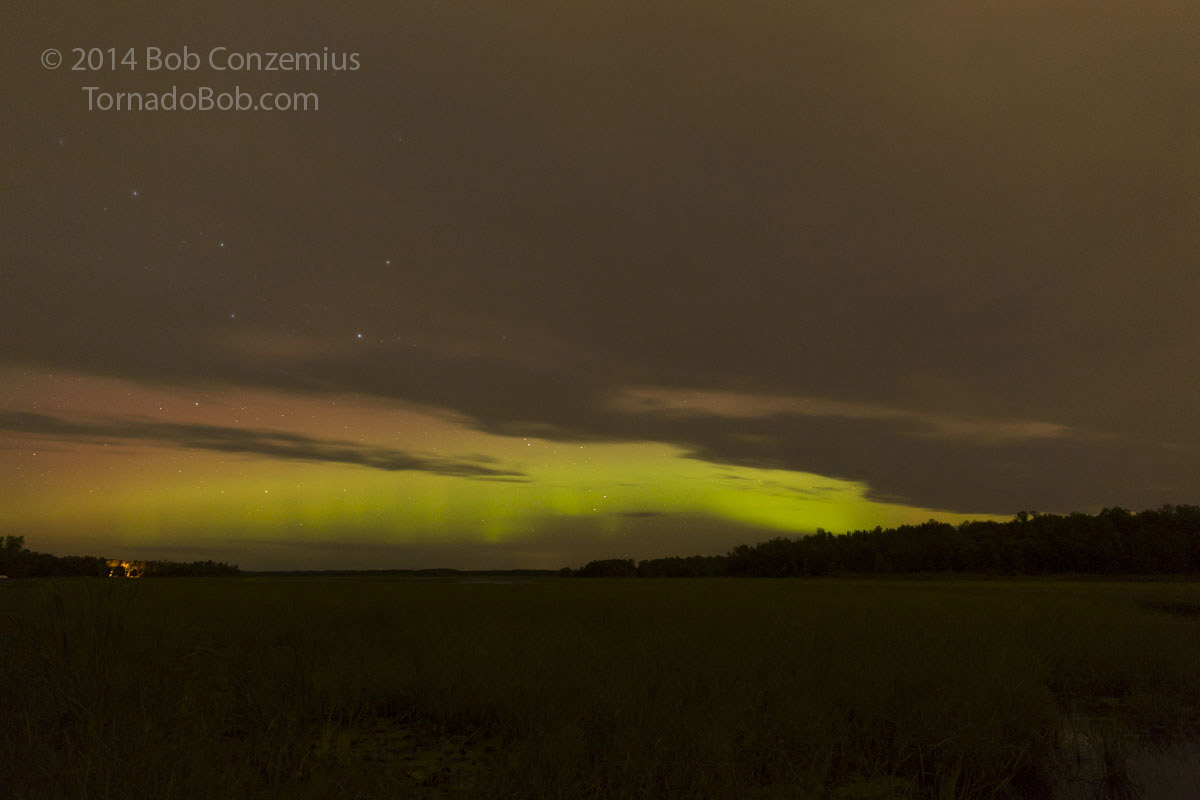 |
| Auroras visible from Bass Lake just north of Cohasset. |
On the way there, I set up the camera for a time lapse from the passenger seat. I had done that before with some interesting results and wondered whether it would work again tonight. Fog in the headlights made it a bit more difficult than before as mist rose from the road surface after the round of showers we had had earlier in the evening. I missed my turn to the new lake, had to turn around, and saw a wolf or coyote as I was turning around. During my drive, I could see some structure in the auroras, so I thought I might be missing a substorm. When I arrived at the lake, I caught at least the second half of the substorm because there was still a lot of structure visible. The camera showed it was mostly monochromatic, though-- all green.
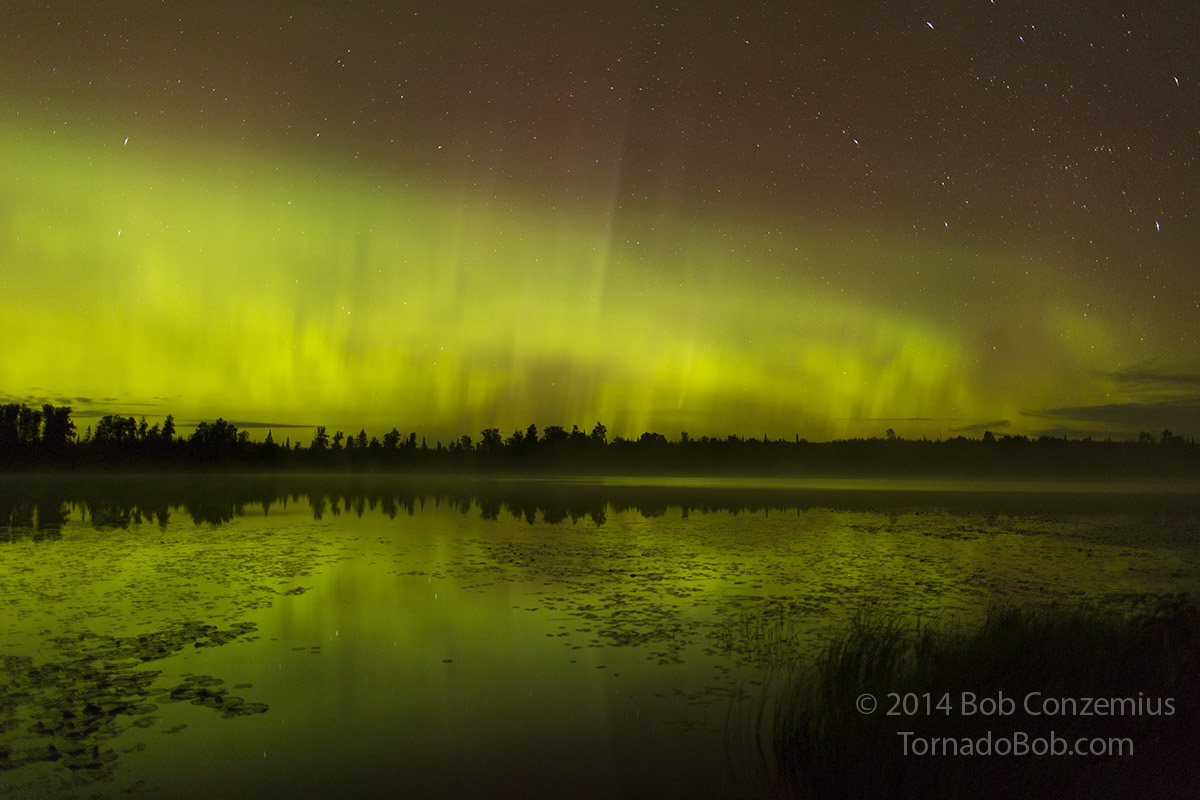 |
| Auroras visible from Bower Lake in the George Washington State Forest. |
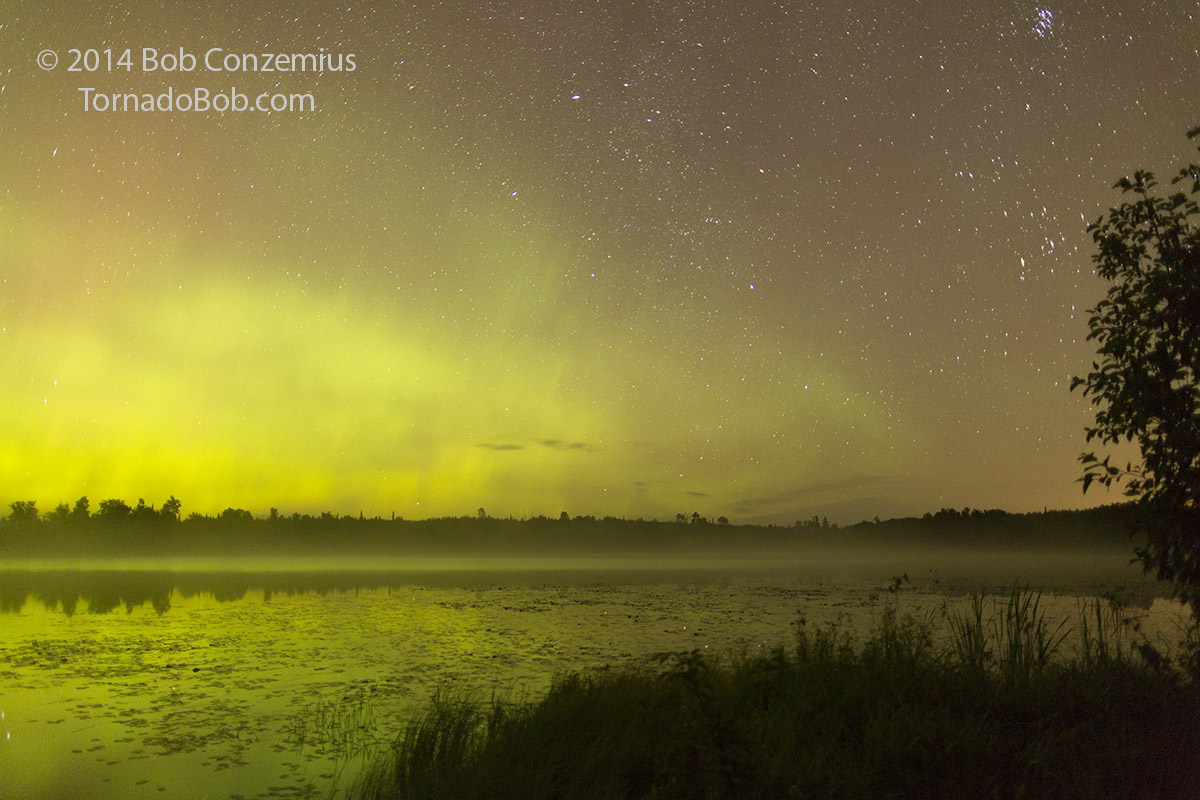 |
| Longer exposure at higher ISO to reveal the fog on the lake. |
After doing some time lapse work here, I decided to head toward home. I had work the next day, and I should be sleeping. However, I found a couple nice spots to shoot along the way, and a substorm finally erupted after 4:00 AM as I was pulling into Grand Rapids.
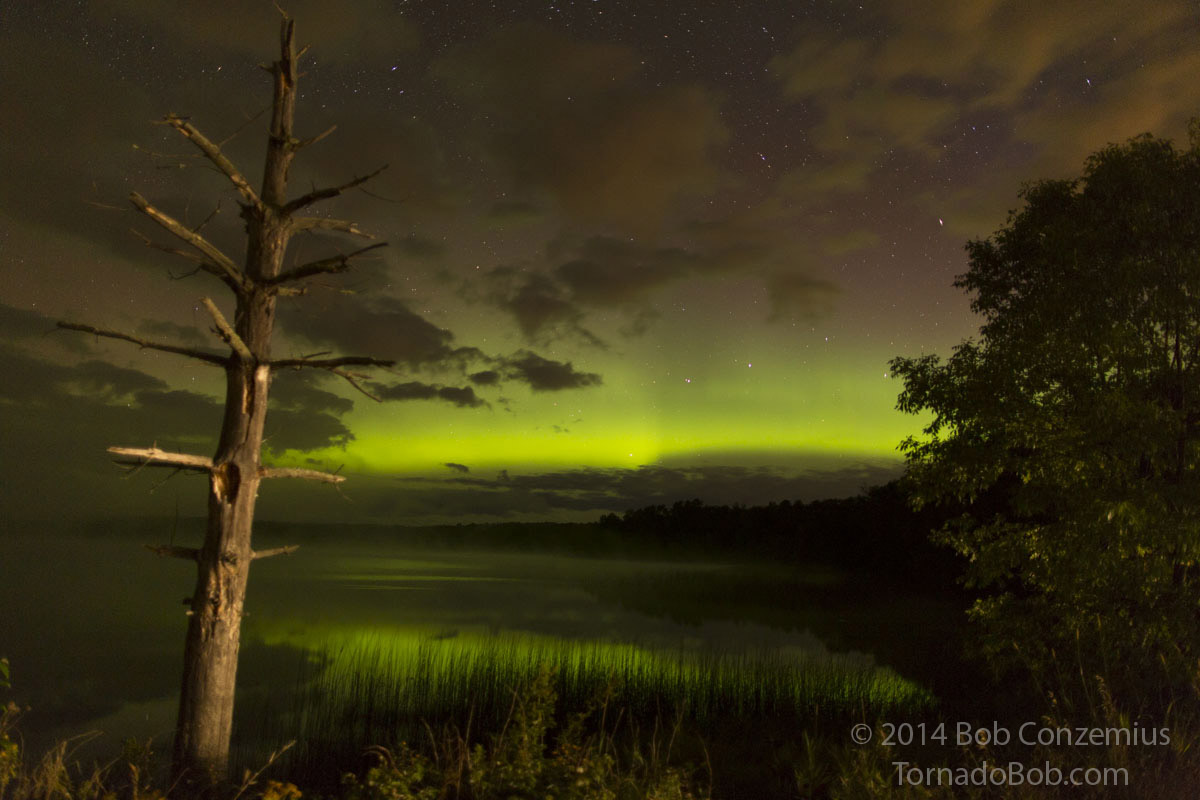 |
| Snowball Lake near Pengilly. |
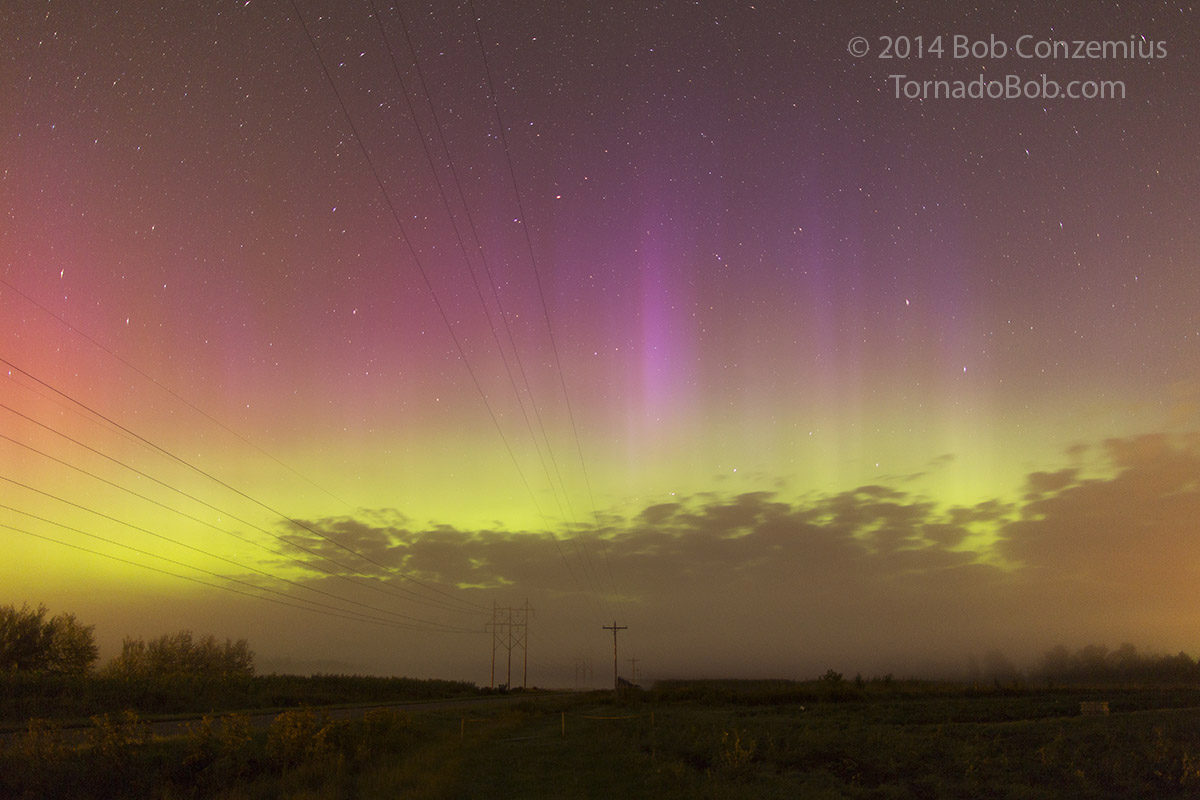 |
| The main multi-colored substorm that night: near Itasca Commmunity College at 4:30 AM. 24 mm |
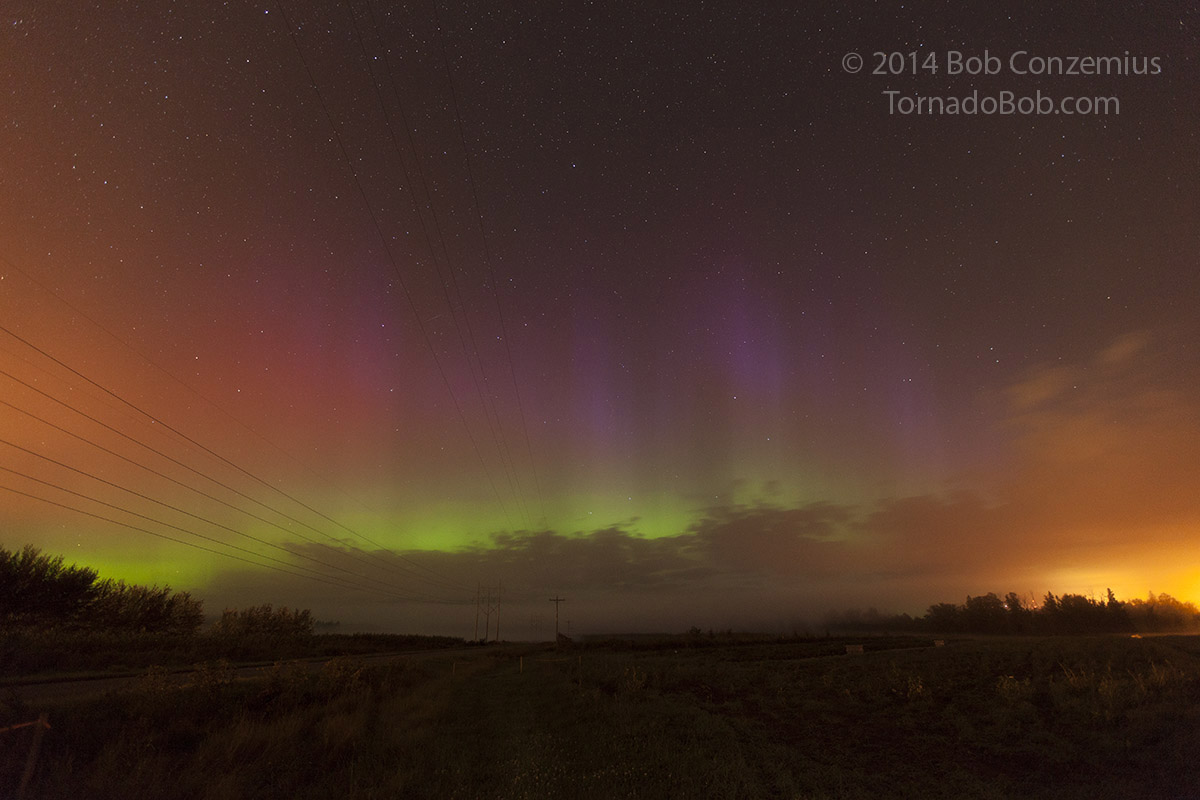 |
| The main multi-colored substorm that night: near Itasca Commmunity College at 4:30 AM. 16 mm |
Back to Auroras | Home



